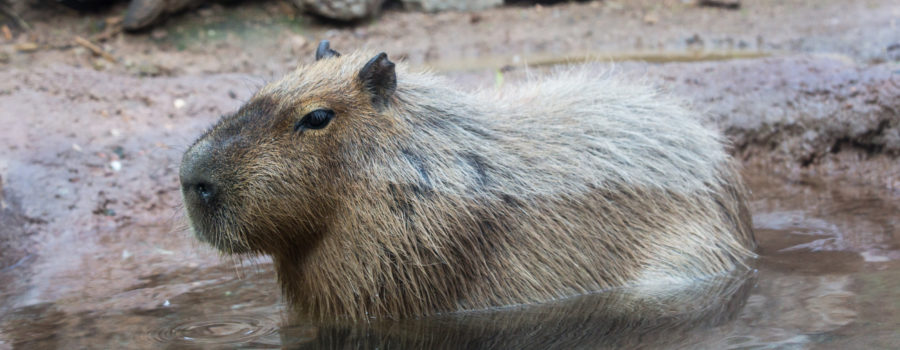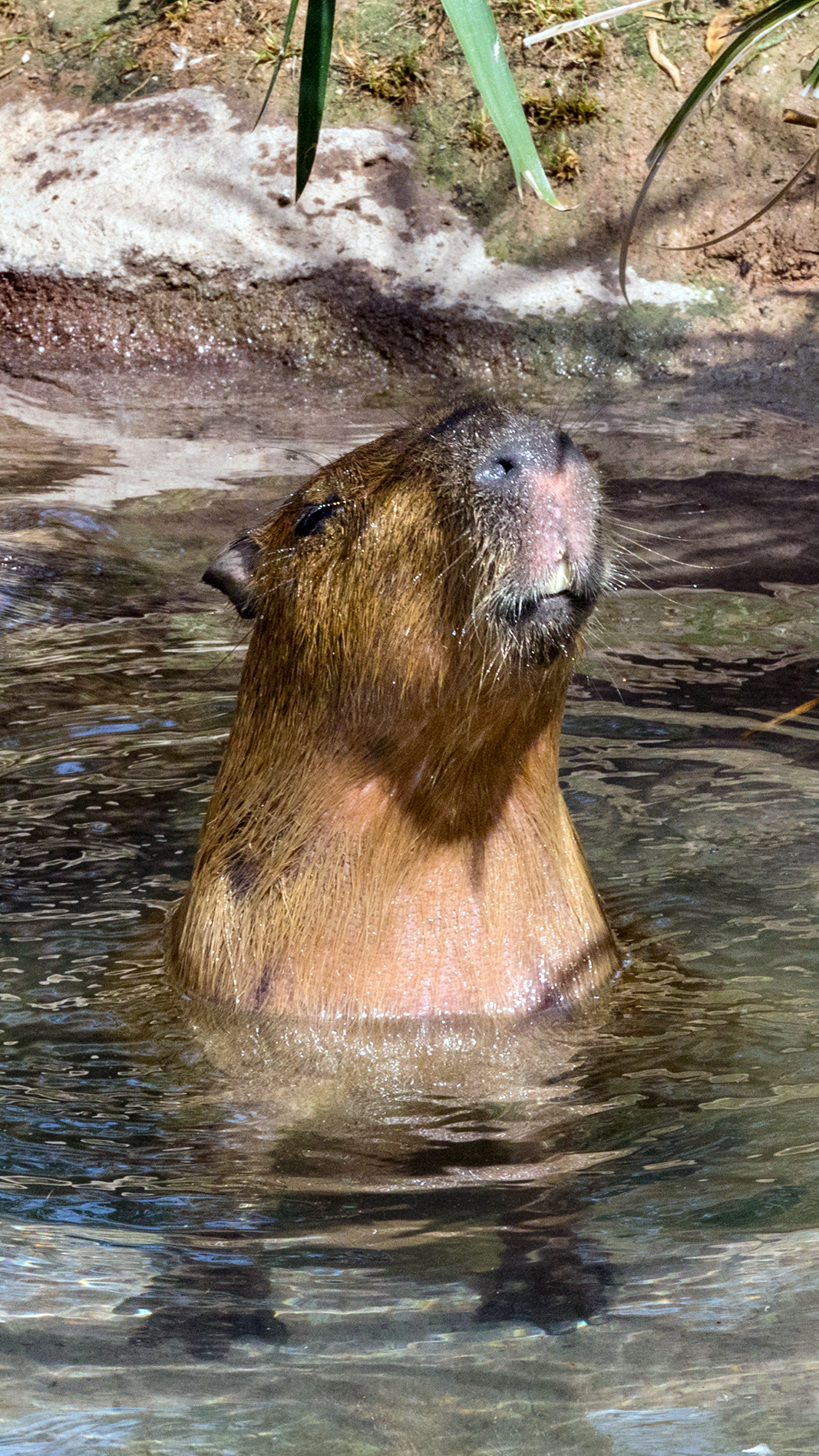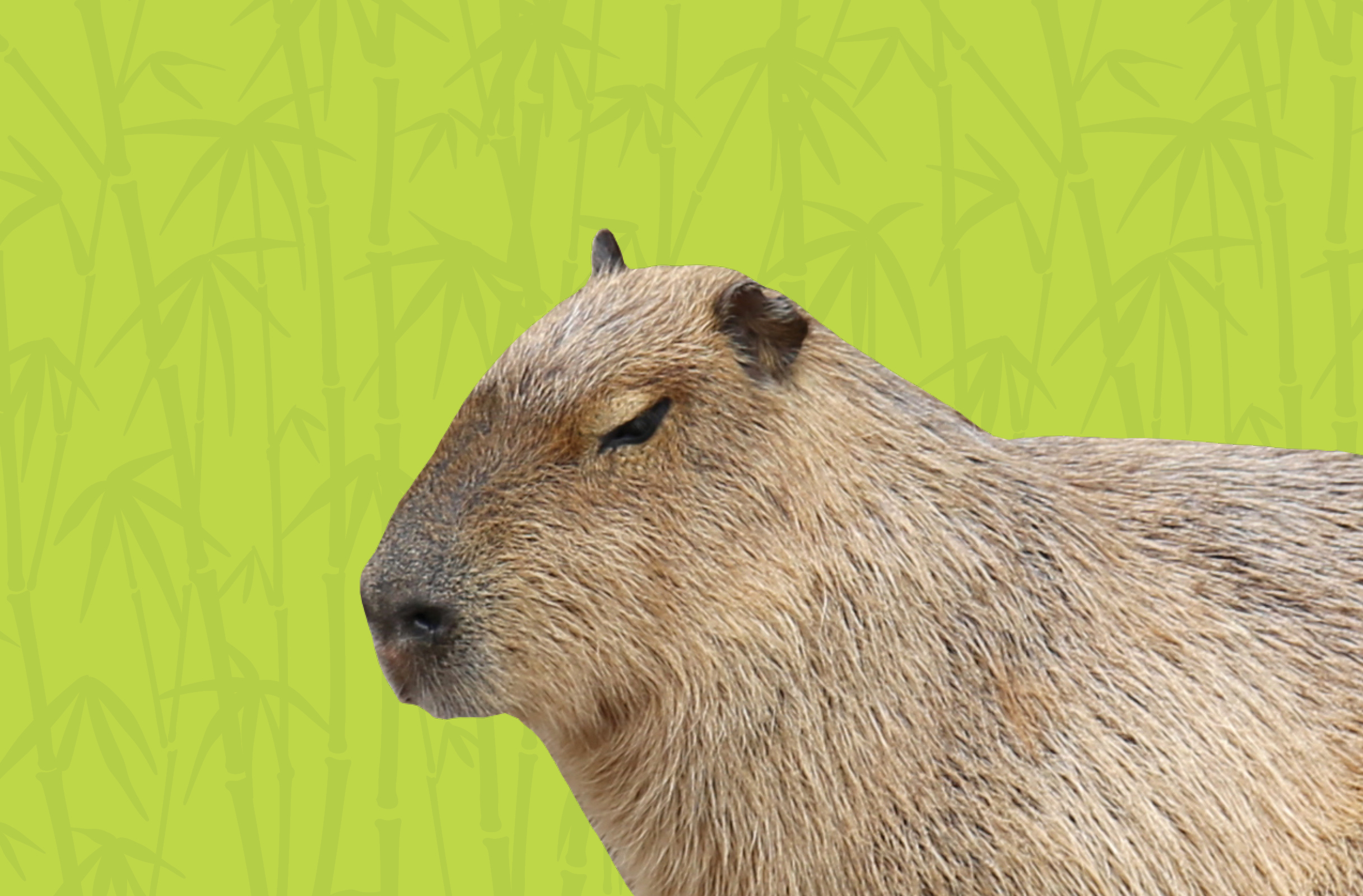Capybaras are the largest members of the rodent family and share similar characteristics to their smaller relatives like squirrels and mice. The most notable of these features are their large front teeth, which will continuously grow throughout their lifetime. Capybaras use these teeth for grazing on water plants and grasses.
Diet: Capybara diets change depending on whether it is a dry or wet season. During the dry season, capybaras will eat reeds, grains, melons, and squashes. During the wet season, they will eat fresh grasses and water plants. An adult capybara is able to eat six to eight pounds of grass per day. Sometimes, they will eat their own feces in order to get bacteria into their stomachs to help break down fibers. Three to six plant species comprise 75% of their wild diet..
In the Wild: Capybaras are well adapted for life near the water and depend on it. Just like a hippopotamus, a capybaras eyes, ears, and nostrils are located near the top of their heads, so they can be submerged in water. Capybaras will hide from predators in the water and can hold their breath for up to five minutes. Their toes are slightly webbed to swim through the water with ease.
Conservation issues/actions: Currently, wild capybara populations are threatened by deforestation, habitat destruction, and illegal poaching for their meat. To mitigate the effect of the meat market on wild populations, capybaras are now being farmed for meat as part of a mammal management plan in Venezuela and Colombia. Your actions in taking a stand against illegal wildlife hunting and trading helps wild capybara populations.
At the Zoo:
At the Reid Park Zoo, the capybaras receive regular target-training sessions for both enrichment and healthcare. You may see animal care staff working with them with a special target stick, a whistle, and a food reward. Among other behaviors encouraged by animal care staff through this positive reinforcement training, our capybaras are trained to voluntarily walk onto a scale so that their weight can consistently be tracked for healthcare purposes. The capybaras enjoy banana and lettuce as a tasty reward. You may also see various types of browse (tree trimmings) placed around the habitat, such as banana leaf and Arunda grass, that the capybaras enjoy munching on and which helps them to naturally file their teeth.




